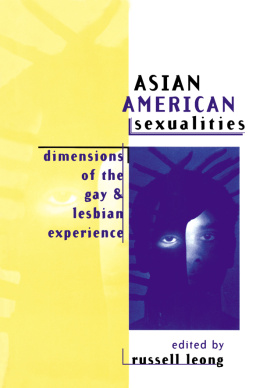Desi Divas
Desi Divas
Christine L. Garlough
POLITICAL ACTIVISM IN SOUTH ASIAN AMERICAN CULTURAL PERFORMANCES

www.upress.state.ms.us
The University Press of Mississippi is a member of the Association of American University Presses.
Copyright 2013 by University Press of Mississippi
All rights reserved
Manufactured in the United States of America
First printing 2013
Library of Congress Cataloging-in-Publication Data
Garlough, Christine, 1967
Desi divas : political activism in South Asian American cultural performances / Christine Garlough.
pages cm
Includes bibliographical references and index.
ISBN 978-1-61703-732-0 (cloth : alk. paper)
ISBN 978-1-61703-733-7 (ebook) (print) 1. Performance artPolitical aspectsUnited States. 2. Performance artSocial aspectsUnited States. 3. South Asian American womenSocial life and customs. 4. South Asian American womenEthnic identity. 5. Women in the performing artsUnited States. 6. Art and social actionUnited States. I. Title.
NX512.3.A83G37 2013
792.089914073dc23 2012036106
British Library Cataloging-in-Publication Data available
For Gabriel, Isabel, and Dhavan, and for Don, Patsy, and Carrie, with all my love
Contents
Acknowledgments
Writing a book is always a collective endeavor. With this in mind, I would like to express my deep gratitude to those who have contributed to this work.
This book would not have come into being without the open and welcoming response of the South Asian American activists and performers whose efforts fill these pages: teachers and students at the School for Indian Languages and Cultures, the South Asian Sisters and Yoni ki Baat performers in San Francisco and Madison, and the Post Natyam Collective. Specifically, the relationships I developed with Vandana Makker, Ayeshah Emon, Preeti Mathur, Roopa Singh, Shyamala Moorty, and Cynthia Lee Ling leave me in their debt.
At the University of Wisconsin-Madison, I am fortunate to have exceptionally supportive colleagues in the Department of Gender and Womens Studies, the Folklore Program, the Center for South Asia, and the Center for the Study of Upper Midwestern Cultures. A special acknowledgment must be paid to Julie DAcci, Jane Collins, and Myra Marx Ferree, who read the manuscript with care and offered astute comments. In addition, Tom Dubois, Jim Leary, Joe Salmons, and Rob Howard all offered guidance and support in the early stages of this manuscript. Feedback from colleagues outside these departments, such as Michael Hyde and Hemant Shah, helped to push this project forward. A special thanks to Erik Doxtader and the participants in the biannual Conference on Rhetorical Theory who listened carefully to my ideas about acknowledgment, care, and critical play as they were developing and offered excellent feedback.
I also wish to thank several research assistants and copy editors for their help, close reading, and meticulous comments: Paige Black, Paul Smaglik, Danielle Devereaux-Weber, Michelle Murray, Ryan Solomon, Ayeshah Emon, Manisha Shelat, and Carley Yuenger.
Funding for this book was generously provided by two University of Wisconsin-Madison Graduate School Research Competition Grants and a Vilas Lifecycle Grant.
I would like to thank my family who has encouraged and supported me during the research and writing of this bookmost especially Dhavan, Gabriel, Isabel, and Carrie. You are dear to me, and this book is a testament to what a person can complete within a context of care and love. Lifelong friends like Beatriz Botero, Hernando Rojas, and Laura Seybold sustained me through laughter and companionship. To you, I extend a heartfelt thanks. I would also like to offer a sincere thank you to Craig Gill, editor-inchief of the University Press of Mississippi, who embraced this interdisciplinary venture and took interest in its development. He has been a delight to work with.
Desi Divas

Shyamala performing as the goddess. Photo credited to Christine Nguyen, courtesy of Te Ada Productions.
Chapter One
Toward Acknowledgment
Care in Diasporic Performances
Shyamala Moorty sits on a cold, white toilet in the center of a bare stage. Her eyes move slowly across an audience that includes mainstream and South Asian American community members, war veterans, as well as university students and faculty. This diverse group has come together on a cold October night in Madison, Wisconsin, to participate in a 2005 performance called Rise. Hands shaking as she holds a newspaper, Shyamala listens to a cacophony of local and national media reports. Playing one over the other, each details the terrorist destruction of the World Trade Center in New York City and the Pentagon in Washington, D.C. Picking up a carefully folded American flag from the stage floor, she slowly opens it up for the audience to view and places her hand over her heart. Next, she begins to tell a story. It is an incident that occurred immediately after 9/11, while walking in her California neighborhood. She recalls:
I walked through my neighborhood passing lawns bordered by the flags of blue with white stars and stripes of red. I came upon a plain white house and I saw a middle-aged white man with glasses watering his lawn. I prepared my friendly stranger smile, only to be met with a grotesque scowl making a gargoyle statue out of his still body. Suddenly, his arm jerked, spraying the water at me. I was far enough away that the droplets didnt physically touch me but I felt them pour down inside, flooding my lungs with shock. I struggled to breathe but he did it again. I turned to go in confusion. Only to see the same stars, brighter now against the red of anger. Watching me. Lining the street like a regiment. Watching me. Monitoring me. Ushering me into the future of Homeland Security.
Of course, Shyamalas experience was not uncommon. Immediately following 9/11, South Asians experienced a record increase in incidences of bias, hate crimes, profiling, and discrimination. Indeed, in the first week following 9/11, hundreds of incidences of bias or violence against South Asians were reported in the United States ( http://www.saalt.org ).
However, what does make Shyamalas testimony in this public forum unique is its artistic and inventive form. While wondering aloud about the politics of home and identity politics within contexts that are characterized by violence, Shyamala enacts the outlines of her bicultural ethnicity, as her body gracefully combines ballet, a traditional Indian dance called Bharatanatyam, and contemporary dance movements. Moments later she plunges the newspaper and the American flag down the toilet.
In her performance of Rise, this South Asian American activist and feminist performance artist extends an invitationa call for acknowledgment. Asking for more than mere tolerance or simple recognition, she weaves together personal testimony and traditional cultural forms in inventive ways, with the hope of generating concern, care, and compassion among her audience. In doing so, Shyamala adds a meaningful perspective to the public sphere in an alternative fashion. Politics, of course, has always had an element of performance, though attention toward its importance has arguably increased in recent years (Alexander 2010). However, what interests me about Shyamalas presentation is precisely the means by which her political performance persuades in unconventional ways. She relies less upon claims for recognition and more upon calls for acknowledgment that intertwine justice and care. She also embeds her testimony in traditional cultural forms to invite reflection and connection among those who gathered to witness it. That process encourages her audience to not merely think differently about citizenship, violence, and belonging, but also to feel differently about the plight of the South Asians she dramatized.
Next page






